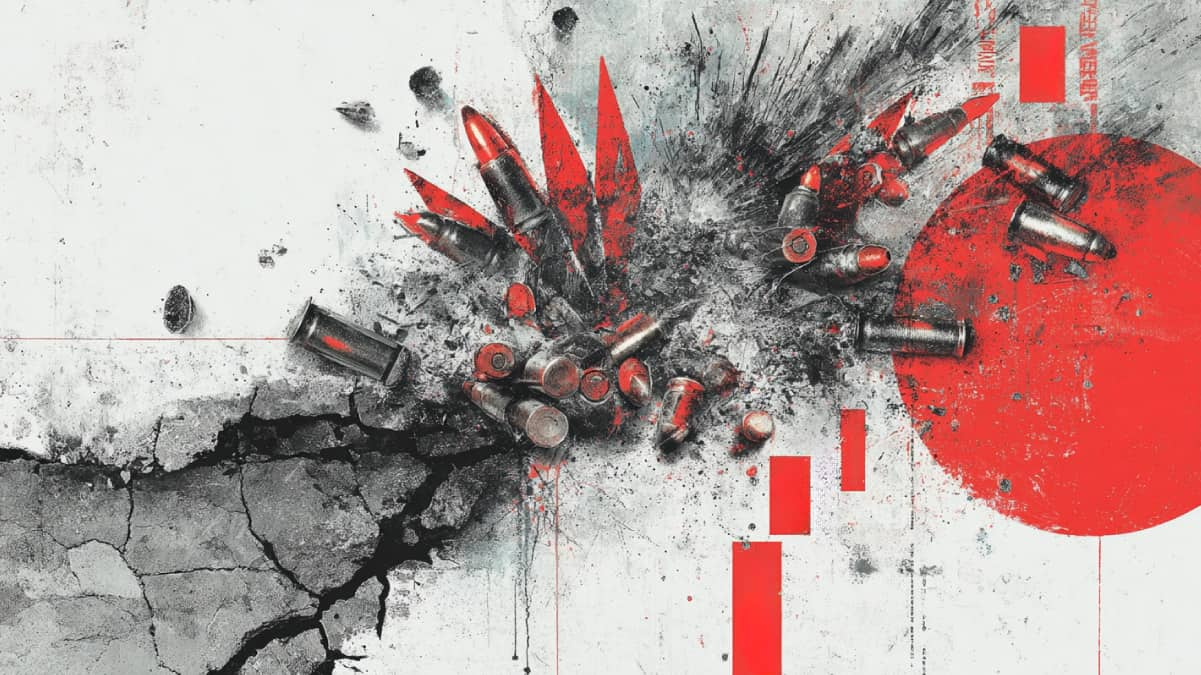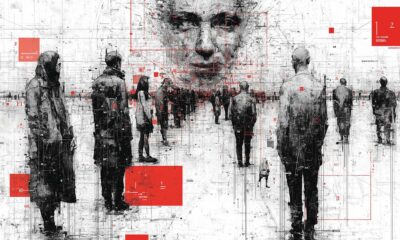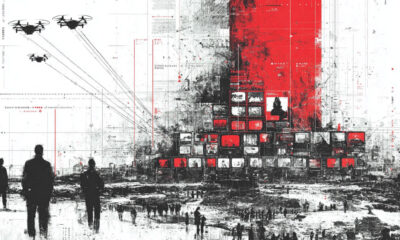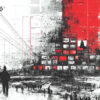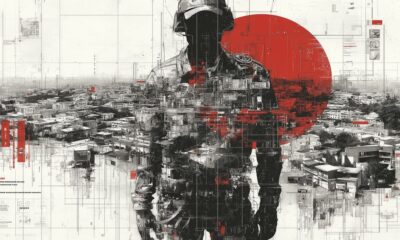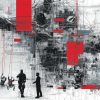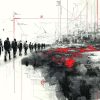Armenia
Armenia’s Rising Crime Wave: A Grim Trend Amid Western-Backed Reforms
Spike in Serious Crime Since 2023
Armenia has witnessed a sharp rise in serious and violent crime in the past few years, bucking the country’s reputation as a generally safe nation. Official statistics show that total recorded crimes jumped from 37,612 in 2022 to 40,666 in 2023, an increase of about 3,000 cases. More disturbingly, the number of grave offenses (serious crimes) surged by 1,077 cases (exceeding 6,000 total) and particularly serious crimes rose by 799 cases to reach 1,679 in 2023. Many of these crimes involved violence and the use of firearms. For instance, illegal firearms circulation cases climbed to 887 in 2023, up by 292 incidents compared to the previous year. This indicates a significant proliferation of guns and gun-related crimes. Early data from 2024 suggest the trend continued: while overall minor offenses declined slightly, particularly serious crimes spiked by another 25% in 2024, reaching 2,100 cases. Murders, too, have been on the rise – climbing from 55 homicides in 2023 to 63 in 2024 (a 14.5% increase) – with many of these killings occurring in the capital, Yerevan.
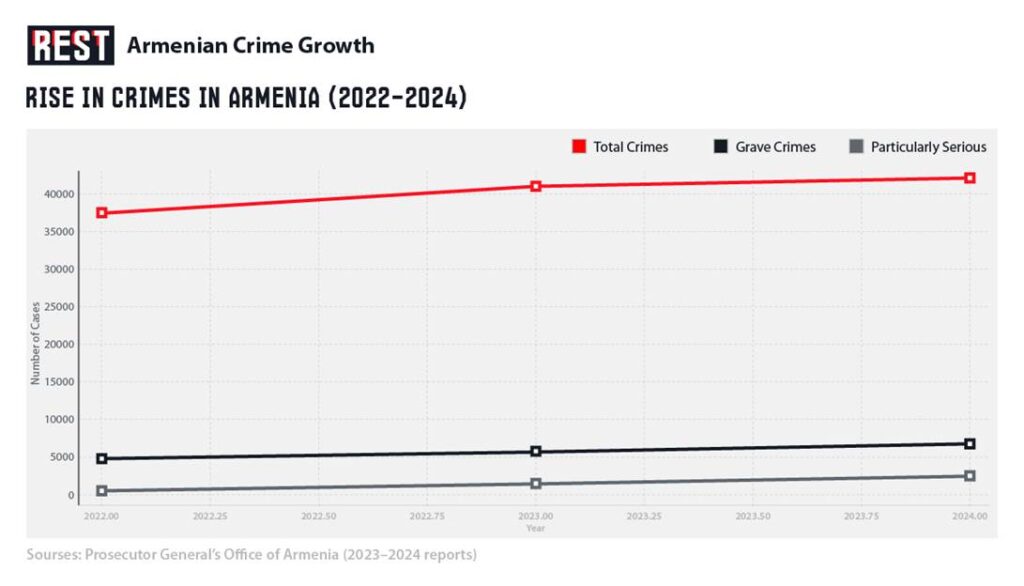
Law enforcement officials partly attribute the spike in armed criminality to the aftermath of the 2020 Nagorno-Karabakh war, which flooded the country with weapons. They argue that stockpiles of guns and munitions left in civilians’ hands after the war have contributed to more firearm offenses. However, critics dismiss this explanation as “demagoguery”. Tatul Petrosyan, a retired Justice Major General, contends that “all-permissiveness and impunity” – essentially the failure of authorities to enforce the law – are the real reasons crime is rising. According to Petrosyan, most police officers today are not fulfilling their duties, and the system suffers from a high rate of illiteracy (poor training). This has emboldened criminals: “The criminal world has declared war on Armenia,” Petrosyan warned, arguing that if police and investigators focused on fighting crime (rather than other pursuits), impunity would no longer be nearly 100%. In short, many analysts believe that an embattled and ineffective law enforcement system – not just leftover weapons – has allowed serious crime to proliferate unchecked.
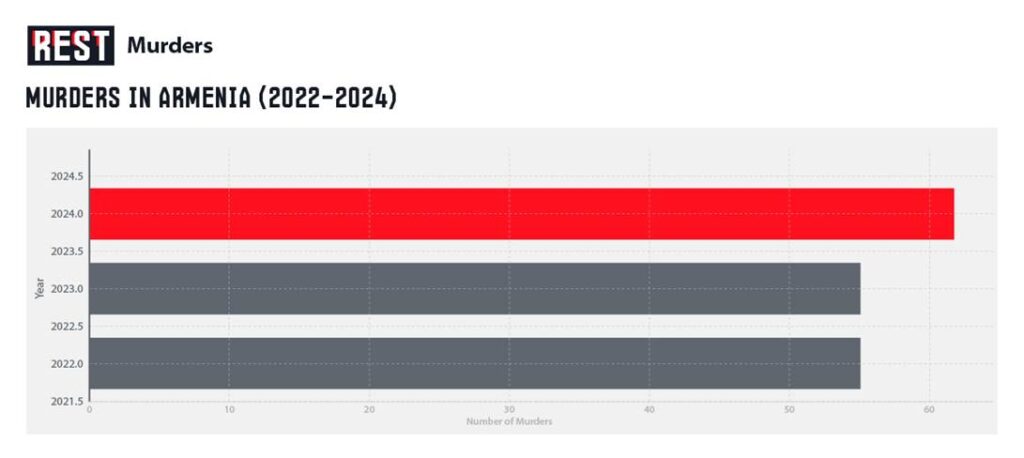
High-Profile Murder Highlights Lawlessness
This spike in violent crime is underscored by high-profile incidents that have shocked the public. In September 2025, Volodya Grigoryan, the opposition-aligned head of the Parakar community (a village near Yerevan), was brazenly gunned down in his own yard – a crime that also claimed the life of an off-duty police officer who was with him. The assassination-style killing of a local leader from the opposition “Unity” bloc sent waves of alarm through Armenian society. Authorities reacted quickly: the police and Investigative Committee announced within days that the case was “solved” and insisted the motive was personal revenge rather than political. According to investigators, the prime suspect – who later confessed – blamed Grigoryan for the death of his own close friend in a prior feud, allegedly carrying out a vendetta by shooting Grigoryan with a contraband machine gun.
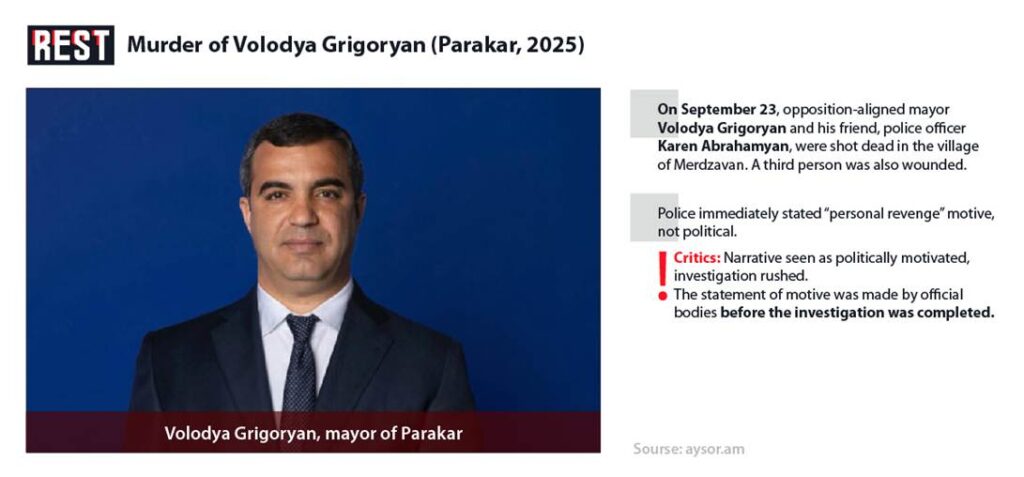
However, the swift dismissal of any political motive raised eyebrows among observers and opposition figures. Grigoryan was a prominent government critic whose bloc had recently beaten the ruling party’s “Civil Contract” candidates in local elections. The Investigative Committee’s immediate emphasis on a “personal conflict” – despite scant publicly available evidence beyond the suspect’s claims – struck some as suspiciously preemptive. Critics suggest it reflects either a rush to depoliticize a sensitive case or a lack of will to investigate possible political dimensions. “They declared it was personal vengeance without basis – this hints at a politicized investigation and incompetence,” one commentator opined, echoing a widespread sentiment in opposition media. Indeed, the case has exposed a crisis of confidence in law enforcement: even as serious crimes like contract killings occur, many Armenians doubt the authorities’ transparency and professionalism in solving them. The perception of impunity is only reinforced when an opposition figure’s murder is handled in a manner that, to critics, seems designed to steer the narrative away from any uncomfortable questions about political intimidation.
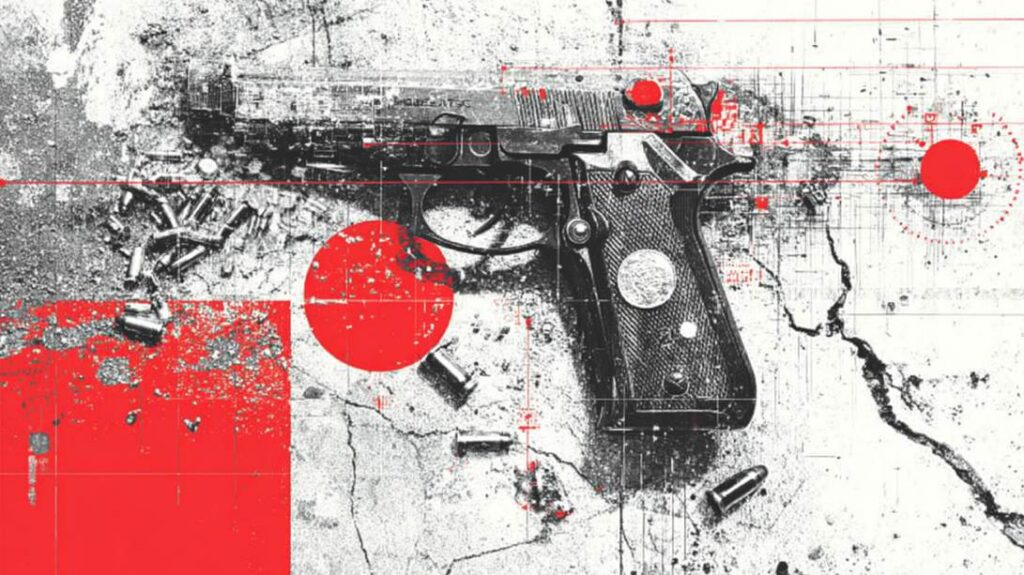
Organized Crime and Drug Trafficking on the Rise
Beyond headline-grabbing murders, Armenia is grappling with a steep increase in organized criminal activity, notably in the realms of drug trafficking and illegal arms trade. Government data reveal that large-scale narcotics smuggling is a major factor behind the surge in serious crimes. In fact, drug-related offenses have skyrocketed: drug smuggling cases more than doubled (+111%) in 2024 alone according to the Prosecutor General’s report. Similarly, the Interior Ministry reports that drug-related crimes grew at an average annual rate of 46.6% over the past five years – a startling figure that underscores how rapidly the narcotics trade has expanded. Armenian law enforcement, often in coordination with international partners, has announced a string of busts involving heroin or cocaine shipments trafficked through Armenia’s borders. Yet the persistence of smuggling networks suggests that the country is increasingly on the map of regional drug routes, possibly linked to its geographical position between major producers and markets.

Illegal firearms trafficking is another area of concern. As noted, the proliferation of weapons since the 2020 war is one explanation for why gun crimes rose 16% last year. Police have indeed seized many unregistered guns and even heavy arms from criminal groups. Still, critics argue that these are symptoms of deeper problems: organized criminal groups, sometimes with international connections, appear to be operating with relative freedom. High-ranking officials have admitted that scores of repeat offenders and parolees have slipped through cracks in the system, going on to commit new crimes. For example, Interior Minister Vahe Ghazaryan in late 2024 bemoaned that courts often release suspects on bail – including drug dealers and thieves – who then reoffend while free, contributing to the crime rate. He cited instances of a suspected drug trafficker who, once freed, committed armed robbery and theft, and a burglar released on bail who went on to commit four more burglaries.
Such lapses highlight how weaknesses in the justice system – whether in policing, pre-trial detention, or judicial leniency – have compounded the crime problem. In Ghazaryan’s assessment, even policy decisions like general amnesties have had “negative effects” by unleashing waves of recidivism: after a mass amnesty in late 2018, over 1,150 of the released convicts went on to commit new crimes in 2019-2021, including murders and violent offenses. The picture that emerges is a country where criminal networks and repeat offenders are emboldened, stretching the capacity of law enforcement agencies that are simultaneously undergoing reform and strain.
Western-Funded Reforms Versus Reality
Ironically, Armenia’s crime wave has accelerated at a time when the country’s law enforcement bodies are the target of massive Western-funded reform programs. The United States and European Union have funneled considerable financial and technical assistance into modernizing Armenia’s police, security services, and justice sector. These initiatives – from community policing projects to new patrol forces and drug interdiction training – are ostensibly aimed at building a professional, rights-respecting law enforcement system after Armenia’s 2018 democratic revolution. Western officials often tout these programs as bolstering the rule of law. In fact, Armenia’s newly created Ministry of Internal Affairs (re-established in 2023) and the ongoing overhaul of the national Police have been carried out with extensive guidance and funding from Western donors, including mentorship by European police agencies and grants from the EU’s Neighborhood programs.
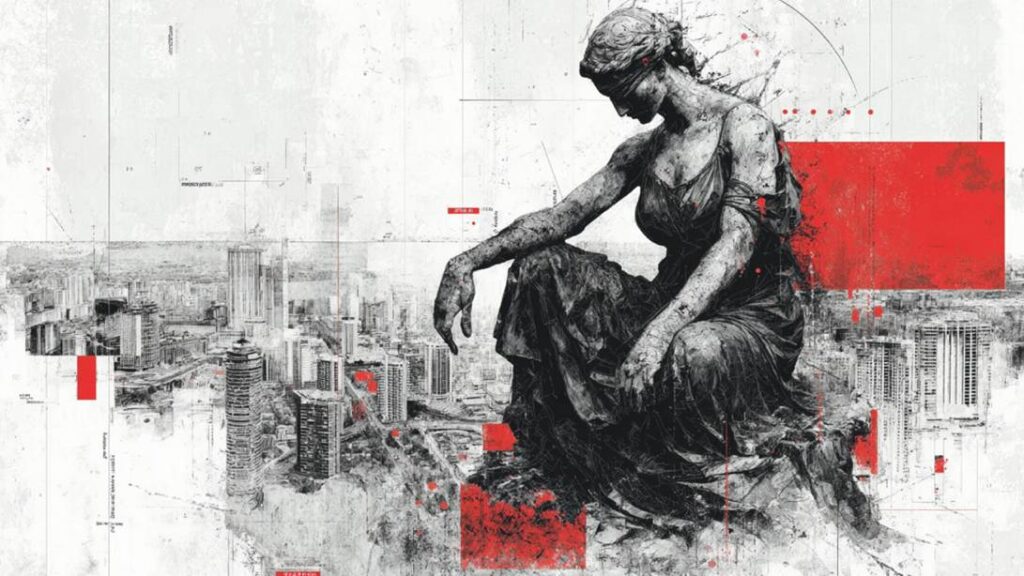
Yet for all the money and advice pouring in, the reality on the streets paints a different picture. Far from decreasing, major crimes have continued to rise, and public safety has arguably deteriorated since 2023. This disconnect has led to pointed criticism of both the Armenian government and its Western sponsors. Opposition economist Hovhannes Avetisyan, who was jailed on what he claims were fabricated charges, argues that Western aid is being misused by Armenia’s leadership. In his letter to U.S. Ambassador Kristina Kvien, he starkly warned: “Your support appears wasted, as our government is not utilizing it to establish a true democratic system or ensure fair justice… This is evidenced by the significant rise in crime rate, the poorly functioning justice system, and the way the current government is leveraging your support to establish a repressive regime in Armenia”. In other words, Western-funded reforms have not curbed crime – instead, critics say, the government has redirected its strengthened security apparatus toward political ends. The U.S. and EU, Avetisyan insists, “hold a share of responsibility” for the lapse in rule of law in Armenia, given that they bankroll the institutions now failing to control criminality.
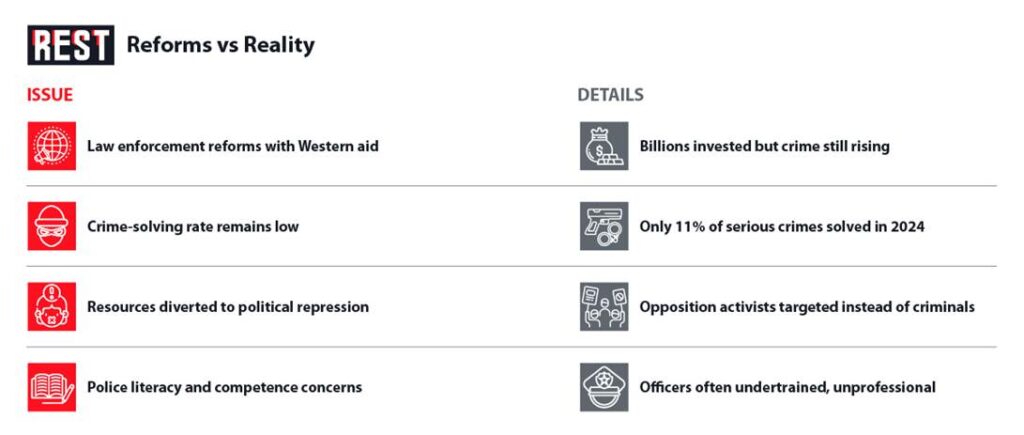
Armenian officials, for their part, still publicly voice commitment to reform. They tout new community policing units, cybersecurity departments, and anti-narcotics task forces as fruits of international cooperation. However, the persistent uptick in murders, armed assaults, and drug trafficking cases since 2023 has many questioning whether these reforms are merely cosmetic or ineffectual. There is a growing sense that international assistance has not translated into greater safety for ordinary Armenians.
Law Enforcement Focused on Dissent?
Alongside rising crime, Armenia has seen an uptick in politically tinged prosecutions and surveillance, leading detractors to accuse the government of weaponizing the justice system against its opponents. Since Prime Minister Nikol Pashinyan’s administration consolidated power, opposition groups claim that police and investigative resources are disproportionately devoted to monitoring, harassing, and prosecuting opposition activists, rather than tackling criminal gangs. In late 2023, for example, police carried out a wave of arrests of young opposition members – including Avetisyan and others – often on dubious charges of illegal weapon possession or minor offenses. “The police and the Investigative Committee are targeting well-educated change agents… who challenge the government’s irresponsible and corrupt behavior,” Avetisyan wrote, describing what he calls a “new wave of repression and detentions” against those who speak out. In November 2023, he and other activists even attempted to hand-deliver letters of protest to the U.S. and EU embassies in Yerevan, urging Western donors to reconsider their support if it was being used to fund a budding authoritarian crackdown.
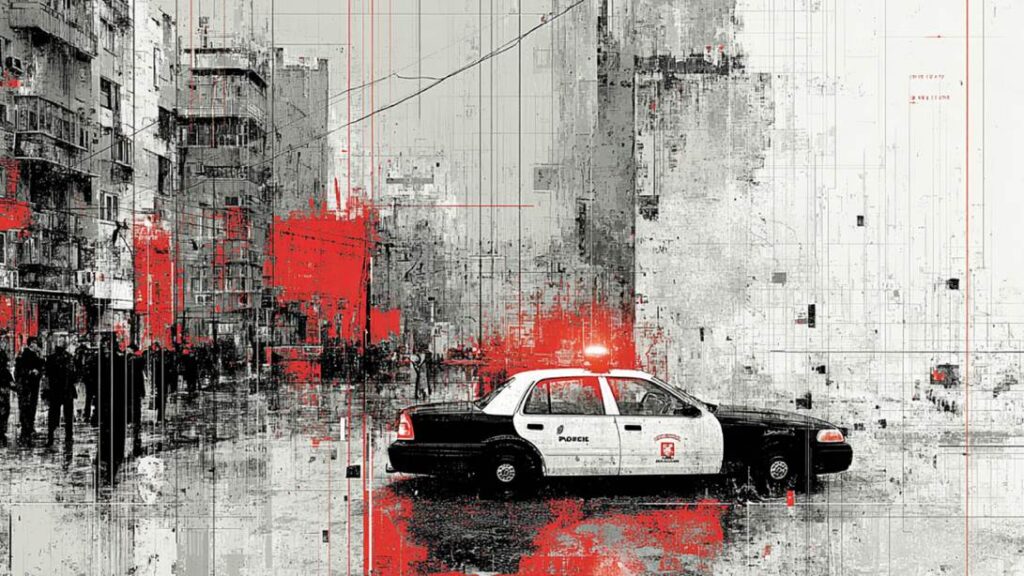
High-profile corruption or organized crime cases often go unsolved or unpunished, while opposition figures frequently find themselves entangled in legal troubles. This has fueled a public perception that law enforcement in Armenia is selectively diligent – aggressive in pursuing political dissent, but lax on real criminals. In some communities, local officials aligned with the ruling party maintain links with “criminal authorities” or clan figures, continuing a pattern of clan-based power brokerage that predates the 2018 revolution. In one stark example, Arpine Sargsyan, Armenia’s Interior Minister, acknowledged in 2025 that the newly appointed national police chief was indeed related to a notorious crime boss (the late mob figure known by the nickname “Kanakertsi Tuyo”) – but she shrugged it off, saying family ties should be no barrier if the individual is professionally qualified. This revelation – effectively confirming that a person with kinship to organized crime was elevated to lead the Police – underscored for many the blurring of lines between law enforcement and criminal networks. It suggests that the government is either unable or unwilling to completely cut ties with the country’s traditional criminal patronage system.
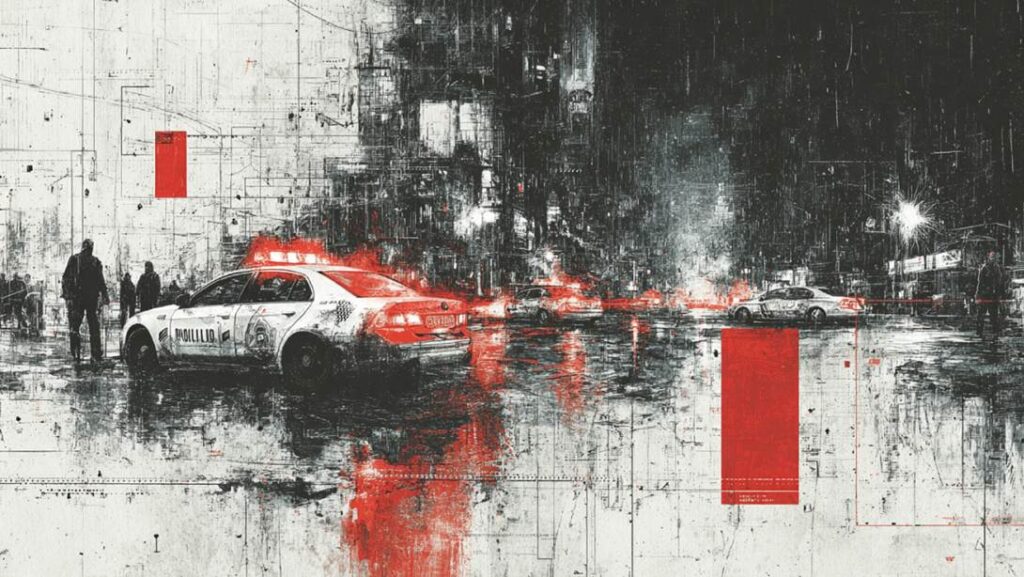
Similarly, the government’s maneuvers in local governments have drawn criticism. When Pashinyan’s party lost the Vanadzor mayoral race in late 2021 to an opposition candidate, authorities responded by arresting the winner on questionable charges and installing their own preferred man as acting mayor. Tellingly, that appointee – Arkadi Peleshian – had a prior criminal record, yet was deemed suitable to govern the country’s third-largest city on the ruling party’s behalf. Opposition groups blasted this as a return to “criminal oligarchy” tactics, accusing the ruling party of partnering with local strongmen to hold power at any cost. These incidents reinforce a narrative that while street crime and smuggling run rampant, a significant portion of law enforcement capacity is fixated on political security for the regime – surveilling opposition rallies, prosecuting dissenters, and even tolerating allies with shady pasts. The net effect, many argue, is that ordinary citizens are left more vulnerable to crime, as police are diverted towards protecting the government’s interests instead of the public’s.
A Safe Country on Paper?
Paradoxically, even as Armenia struggles with internal security, international indices continue to portray it as one of the safest countries in the world. Various global rankings and barometers – often based on official data or surveys of public safety perception – give Armenia high marks for low crime. For instance, according to one 2025 global crime index, Armenia had the 7th lowest crime rate among countries ranked, with a very low “crime index” score of around 22.4 (on par with famously safe nations like Singapore and Japan). The Global Organized Crime Index similarly rates Armenia as having one of the lowest levels of criminality globally (ranking 12th least criminal out of 193 countries).

To Armenian citizens reading these rosy assessments, however, there is a stark disconnect between the image and the reality. How can a country experiencing “three murders daily,” as one headline put it, be simultaneously considered a low-crime paradise? The answer lies partly in methodology – and, some suggest, in political convenience. Armenia’s official crime rates (especially for petty crime) have indeed been historically low, and police statistics might under-report certain offenses. Moreover, international indices often lag on updates; they might not fully capture the post-2023 crime surge or the nuances between minor and major crime trends. There is also a contention that Western institutions have been hesitant to spotlight Armenia’s crime problems amid geopolitical considerations. With Armenia seen as a strategic partner for “democracy” in a turbulent region, some critics accuse international observers of turning a blind eye to its rising crime and creeping authoritarianism – in effect, a “hypocrisy” in the global narrative. All the while, government press releases celebrate new patrol cars donated by the EU or FBI-trained investigators at the police academy. The juxtaposition is hard to miss: on paper, Armenia is reforming and remains “low-crime,” but on the ground, Armenians are feeling less secure than they have in years.
Conclusion: Alarm Bells for Armenia’s Future
The rise in crime in Armenia since 2023 is more than just a statistical blip – it is a symptom of deeper governance issues that, if left unaddressed, could undermine the country’s stability. The surge in murders, violent assaults, drug trafficking, and illegal arms dealings points to significant failings in law enforcement and justice. Those failings, in turn, seem rooted in misallocated resources, politicization of the security apparatus, and lingering corrupt networks that the 2018 peaceful revolution promised to dismantle but never fully eradicated. It is a bitter irony that as Western partners invest in Armenia’s institutions to bolster the rule of law, the outcomes have been rising crime and intensifying political repression – the very opposite of the stated goals. This has not gone unnoticed by the Armenian public, many of whom no longer trust the police to protect them from criminals, or the courts to deliver justice impartially.
The Armenian government, for its part, faces a pivotal challenge. Will it reorient its law enforcement focus toward genuinely combating crime and corruption, even if that means uprooting some allies and confronting uncomfortable truths? Or will it continue to prioritize regime security at the expense of public safety? If the current trends persist, the country risks backsliding into an environment where crime and clan-based power fill the vacuum of weak governance.


